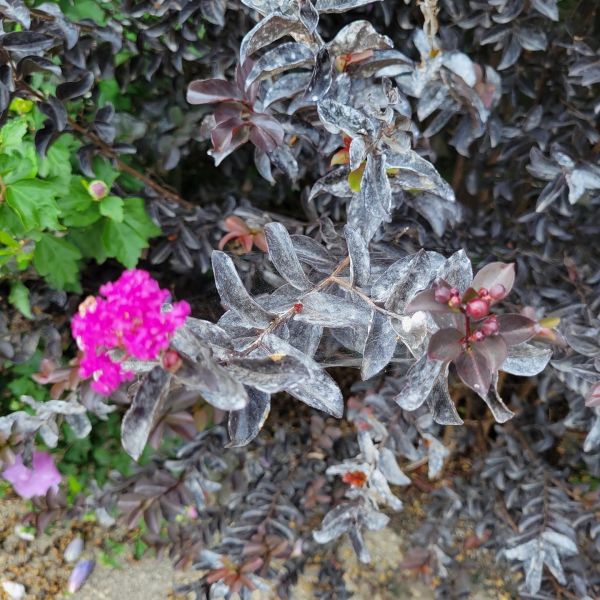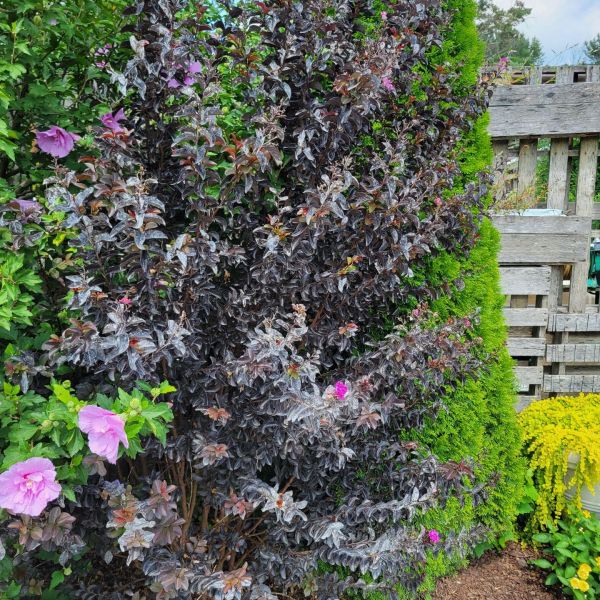Protect Your Plants from Powdery Mildew
As a plant health care company, our responsibility is to bring urgent matters concerning the health of your plants to your attention. One potential threat to your thriving landscapes comes from a plant pathogen known as Powdery Mildew. This plant disease compromises your plants’ vitality by attacking the leaf surface. Today, we provide information about their identifying characteristics and the strategies that can be employed for effective disease management, ensuring the health of your plants.
Understanding Powdery Mildew
Powdery mildew predominantly affects the leaf surface of plants, reducing their beauty and vitality. Various species can cause this fungal disease. Their strength lies in their numbers, with a deluge of microscopic spores – known as conidia – attacking plants. As the fungal disease spreads over the plant surface, intricate structures develop that penetrate plant cells, siphoning nutrients to fuel fungal growth.
Symptoms & Damage
Powdery mildews display the following symptoms on an infected plant:
- White, powdery growth on leaves’ upper and lower surfaces.
- The powdery growth may be challenging to see initially, but will become more pronounced as the infection progresses.
- Leaves may become yellow, curled, and distorted.
- Flower numbers are reduced.
- Plant growth slows down or stops altogether.
Powdery mildew can spread to other parts of the plant, eventually leading to death if untreated. The unchecked spread of this disease can lead to ramifications such as stunted growth, premature leaf fall, and reduced yields and fruit quality.
Life Cycle of Powdery Mildew

Powdery mildew is encouraged in warm (60-80°F) and dry conditions. Different humidity conditions affect powdery mildew spores and their behavior:
- High humidity encourages spore formation
- Low humidity encourages spore dispersal
Powdery mildew does not spread in cooler, rainy conditions and is slowed by high temperatures (>90°F). New spores are produced every 3-14 days once germinated.
The process of germinating and spreading spores is important to understand, too. The beginning stages involve fungal spores landing on a new host plant, germinating, and reaching the leaves. From here, the hyphae produce the conidia: tiny, asexual spores in chains. These conidia are dispersed by wind, water, insects, or people touching the infected plants.
Powdery mildew infections are most severe in crowded, shady, and poorly ventilated areas. A powdery mildew fungus affects plants more in shady than sunny areas In addition, free water is not required for germination and infection, but high relative humidity is required around the plant for the fungus to spread.
Vulnerable Plant Species
While powdery mildew can affect hundreds of plant species, some plant species are more vulnerable to these diseases than others.
Some common plants that are vulnerable to powdery mildew include:
- Azalea
- Crabapple
- Crape myrtle (pictured right)
- Dahlia
- Dogwood
- English ivy
- Euonymus
- Lilac
- Oak
- Pecan
- Phlox
- Photinia
- Pyracantha
- Rhododendron
- Rose
- Spirea
- Snapdragon
- Wisteria
- Zinnia

Effective Management and Control
The best treatment for powdery mildew is prevention, because the condition is difficult to eliminate. The best treatment option for you will depend on the severity of the infection, the type of plant, and the climate.
Fungicide
A few fungicides are available, both organic and synthetic, but they can have negative impacts on other plants or environments, so professional application is recommended. For example neem oil kills insects, including bees, so must be handled carefully. Copper or phosphorous are examples of organic fungicides that are often used as preventive measures with repeated applications during the season when the conditions are ripe for germination and spread.
Pruning
Selective pruning of plants and plant debris can help maintain proper air circulation between them, which keeps humidity low to prevent diseases from spreading.
Soil Care
Soil that is overwatered or poorly drained helps create conditions for the disease, so proper drainage and irrigation is used as a preventive method.
Removal
In severe cases where other options are ineffective, removing the plant may be necessary to protect other plants from becoming infected.
Contact Burkholder PHC for Plant Disease Mitigation
To keep your plants vibrant and safe from powdery mildew, contact Burkholder PHC for more information or to schedule a consultation. We have a team of experienced, qualified experts that can help homeowners maintain the health and appearance of their plant life. With years of experience in plant disease control and integrated pest management, our team knows how to treat plant health care issues so you can keep your landscape beautiful.

